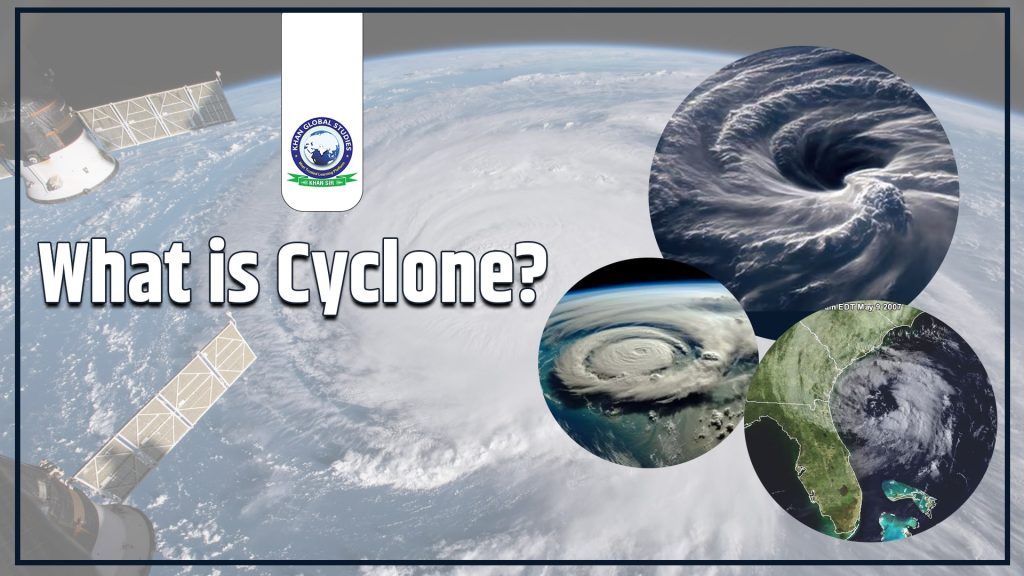
Cyclones, as an atmospheric phenomenon, hold immense power and mystery. In this article, we will understand the complexities of what cyclones are, exploring their formation, types and their impact on our surroundings. From the eye of the storm to the science behind their naming, let’s embark on a journey into the heart of cyclones, the natural disaster that captures our awe and respect.
What is a Cyclone?
A cyclone is a meteorological phenomenon characterized by a low-pressure system at its centre, accompanied by strong winds and heavy rainfall. This atmospheric disturbance can manifest in a variety of forms, with tropical cyclones and extratropical cyclones being the primary types. It is important to understand the basics of cyclones to understand the science behind these powerful weather events.
Understanding Cyclones
Cyclones can be broadly classified into two main types:
- Tropical Cyclones
- Extratropical Cyclones.
key characteristics
Tropical cyclones, often referred to as hurricanes or typhoons, are characterized by a well-defined eye at the center and spiral bands of thunderstorms. They thrive in warm ocean waters, deriving energy from heat and moisture. Extratropical cyclones, on the other hand, derive their energy from temperature contrasts in the atmosphere, which often form at the front of a weather front.
Types of Cyclones
Tropical Cyclones
Tropical cyclones, driven by warm ocean waters, are intense circular storms with a distinct focus in the center. Their formation involves the evaporation of warm ocean water, creating a low-pressure system that intensifies as air rises and cools, releasing latent heat.
Extratropical Cyclone
In contrast, extratropical cyclones form at weather fronts, drawing energy from temperature differences in the atmosphere. These cyclones can affect wide areas and change and lose their tropical characteristics as they move towards higher latitudes.
Naming of Cyclones
Cyclones are named for communication and awareness purposes. The naming process involves regional meteorological organizations assigning names from predetermined lists, often with cultural or historical significance. This practice helps avoid confusion and increases public awareness during cyclonic events.
Impact of Cyclones
- Destructive Forces: Cyclones have destructive power, with powerful winds and heavy rainfall being their primary weapons.
- Wind Speed: The eyewall of a cyclone, around its calm centre, can experience hurricane-force winds. These high wind speeds pose a significant threat to structures, vegetation and infrastructure in their path.
- Heavy Rain: Cyclones are also associated with heavy rainfall, causing flooding in low-lying areas. The combination of strong winds and torrential rain can create devastating conditions.
- Storm and Flood: Cyclonic winds push water towards the coast which can cause coastal flooding. This surge, combined with heavy rainfall, poses a major threat to coastal communities.
- Cyclone Preparedness: Preparedness at both individual and community levels is essential to reduce the impact of cyclones.
- Early Warning System: Advances in meteorological technology have greatly improved the accuracy of cyclone forecasting. Early warning systems provide critical information, allowing timely evacuation and preparation.
- Evacuation Plan: Coastal communities often have evacuation plans in place to ensure the safe removal of residents from high-risk areas. These plans are important to reduce casualties during cyclone events.
- Essential Supplies: Preparation at the individual level includes stocking up on essential supplies and creating emergency kits. This ensures that individuals and families can survive during and after the cyclone.
Global Efforts in Cyclone Mitigation
- International Cooperation: Given the global nature of cyclones, international cooperation is essential for effective mitigation strategies. Sharing knowledge, resources and technologies helps vulnerable areas better prepare for and respond to cyclone events.
- Research Progress: Ongoing research and technological advancements contribute to a better understanding of cyclones and improve forecast accuracy. Satellite technology and computer models enable meteorologists to track and predict cyclones with greater accuracy.
Climate Change and Cyclones
- Impact of Climate Change: There is growing evidence that climate change is affecting the frequency and intensity of cyclones. Warmer ocean temperatures provide more energy for hurricane development, potentially resulting in more powerful cyclones.
- Expected Future Trends: As Earth’s climate continues to change, patterns of cyclones are expected to evolve. It is important to understand these potential changes and adopt mitigation and preparedness strategies accordingly.
Conclusion
In conclusion, cyclones are complex natural phenomena that demand our attention and preparedness. From destructive forces to lessons learned from historical events, understanding cyclones is key to mitigating their impacts. Preparedness at both the individual and community levels is paramount, and global cooperation is essential to address the challenges posed by these powerful weather events.



